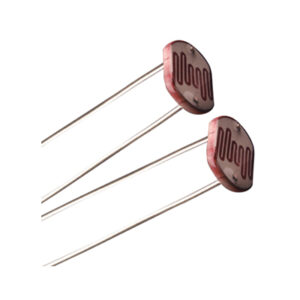Let’s discuss a few things on Resistor Network in this blog.
Definition of a simple Resistor
Resistors are electronic components that resist the flow of electrical current by dissipating its voltage by dropping the current flow. A unit of resistance is ohms and the symbol is Ω.

When we want to make a circuit with a number of resistors connected in series and we try to hook this on a breadboard, it becomes complex, occupies more space and time consuming. Hence we go for Resistor Network.
What is a Resistor Network?
Resistor Network is a passive circuit element that is a combination of multiple resistances in series. We may consider the SIL-Packaged Resistors as a time-saving alternative for individual resistors connected in series.
The Resistor Network shown in the above picture is a Single In-Line component which is an 8 individual 10K Ohm resistors that share a common terminal on pin 9.
Let us explain how this Resistor Network works:
Now let us see how to drop 8-volts in the circuit having 8-volt power supply
To drop 1/8th of 8-volts or 1-volt, we require one 10K resistor. To drop 8-volts we require, eight 10K resistors connected in series. Instead we can use one 9 pin Resistor Network in which 8 resistors are connected in series with 9th pin as bussed (common ground). By this we can drop complete 8-volts in a circuit with 8-volt power supply.
Therefore, it forms an easy solution when we need multiple resistances while constructing a circuit.
An example of how a Resistor Networks works is given below where a single Resistor Network can be used for 8 LED’s and thus save space and time.

Applications:
It can be used to convert analog to digital signals.
In a network, we connect a digital gate to each of the voltage points. When an analog signal is applied, the dividing of the voltage will give a series of one and zeroes. Now the digital gates inject ones and zeroes into the points between the resistors in the network (The Resistor Network comes into play now). This causes the total voltage drop across the resistors in the network to vary proportionally to the overall input, instead of simply turning on and off with the individual digital inputs.
Hope you have enjoyed reading this blog; we will get back to you with more blogs in future
For more information about the product, please visit:
http://www.tenettech.com/product/1667/resistor-network-10k-ohm-6-pin-bussed
For technical queries please drop an e-mail: info@tenettech.com






